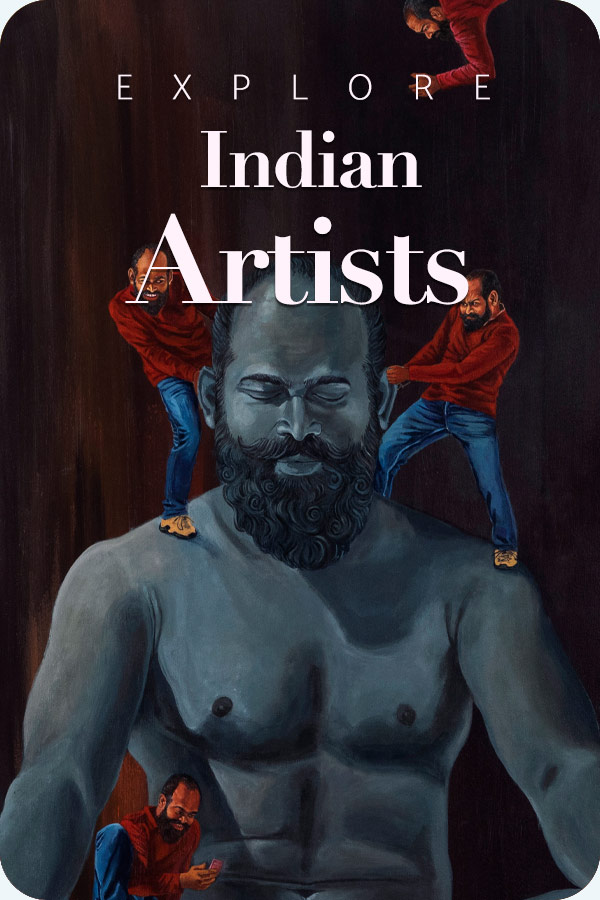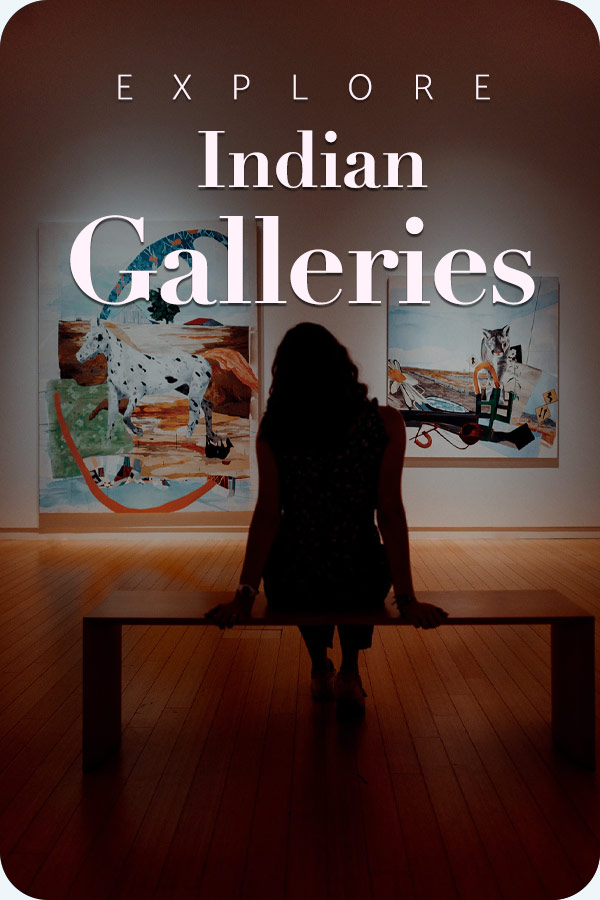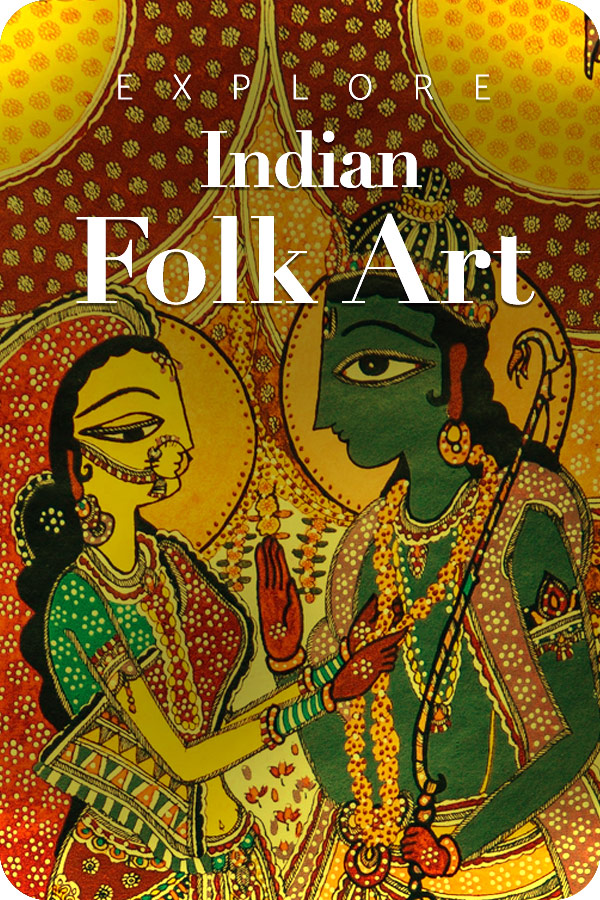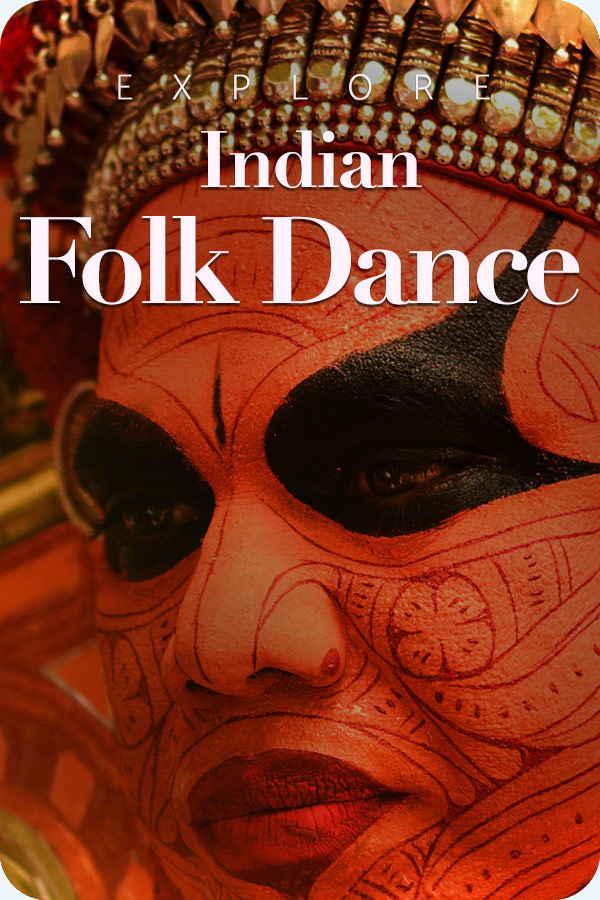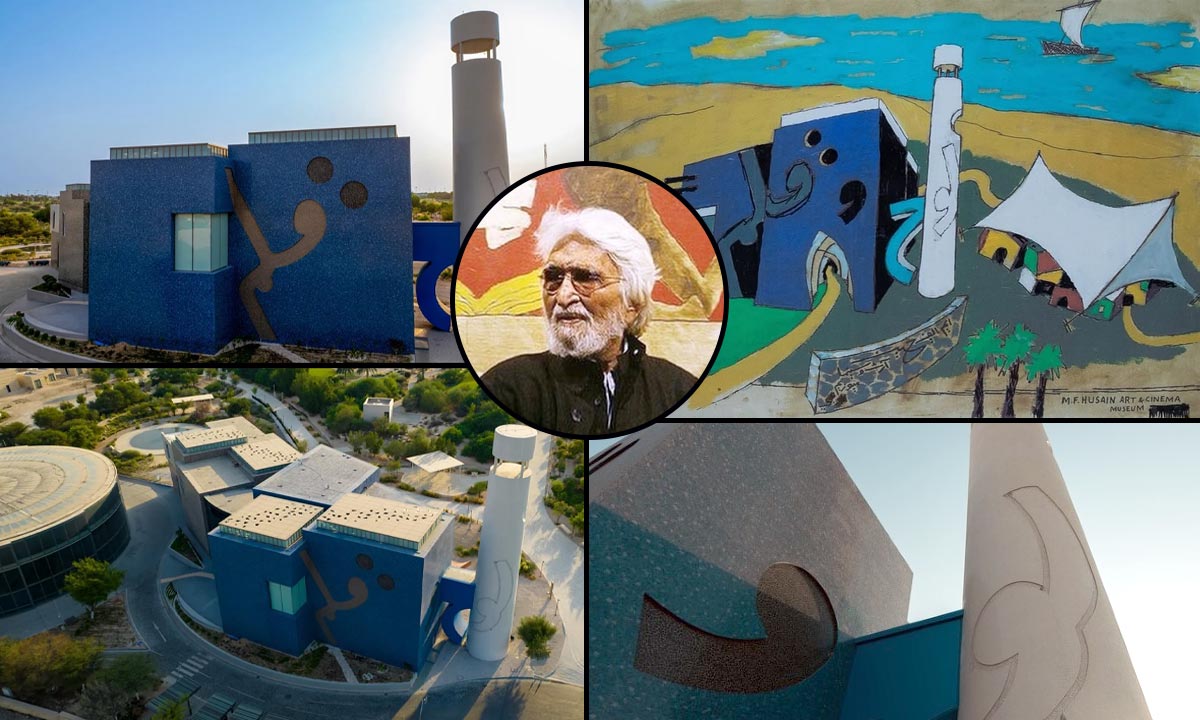
Doha’s Education City is poised to welcome a purposeful establishment on November 28, 2025, Lawh Wa Qalam: M. F. Husain Museum. Spanning about 3,000 square meters, it will be the world’s first and largest museum dedicated solely to a single artist, the late Maqbool Fida Husain, an Indian modernist artist. The museum will trace Husain’s artistic journey from the 1950s until 2011, i.e., till his demise, announced The Qatar Foundation.
In doing so, it creates a “home in Doha” for one of India’s most celebrated painters.
Design Inspired by Husain’s Vision
View this post on Instagram
The very facade of the edifice, with a rich cobalt-blue hue punctuated by calligraphic motifs along with a white tower, is an undeviated adaptation from a 2008 sketch, “Art & Cinema Museum”, by Hussain himself. Qatar’s press release noted that the architecture was “born from a sketch by Husain himself and realized by architect Martand Khosla”. Based on photographic references, the facade appears to be an “Arabic letter-like apertures”. Also, the name Lawh Wa Qalam, christened by the Qatar Foundation, literally translates to “canvas and pen”, emphasizing a very thoughtful trail of Hussain’s lifelong pursuit of art and storytelling. Architecture critics opined that the museum itself stands tall as a ‘piece of art’.
A Museum of Many Media
Among the themes of display, curators will showcase the whole corpus of Hussain’s multimedia coverage. The permanent collection will include film, painting, photography, poetry, and installation paintings, to late abstract compositions. A portfolio of Husain’s canvas works, spanning from early figurative paintings to late abstract compositions, will be exhibited, alongside his poetry and the films he directed. Qatar Foundation aims to magnify the objectivity of being at the museum as an “immersive, multi-format encounter” with Husain’s work. Considering Hussain’s great career, the museum will feature both his Bollywood-inspired sketches as well as his mega projects.
| Exhibit Title | Description & Notable Features |
|---|---|
| Arab Civilization Series | A suite of 35+ large paintings commissioned by Her Highness Sheikha Moza bint Nasser. The works explore historic and contemporary Middle Eastern motifs through bold figuration and color.
|
| Seeroo fi al ardh (“Walking in the Earth”) | Husain’s final magnum opus — a large-scale, multimedia animated installation featuring life-size Murano-glass horses and racing cars on a rotating platform.
|
| Permanent Collection — Paintings, Film, Tapestry, Photography, Poetry | The museum’s permanent galleries present six decades of Husain’s output — from early figurative canvases and modernist experiments to films, tapestries, and photographic series, along with his poetry and sketchbooks.
|
| Signature Motifs & Thematic Rooms | Smaller galleries focus on Husain’s recurring preoccupations — horses, cinema and Bollywood, myth and folklore, and the human form — presented with comparative texts and multimedia.
|
Husain’s Legacy and Global Significance
The Qatar museum deeply acknowledges Husain’s stature as an artistic spearhead. Often labelled as “the Picasso of India,” M.F. Husain (1915–2011) co-established Bombay’s Progressive Artists’ Group in 1947 and played a key role in establishing a modern Indian art language. His illustrious career, from just being a barefoot billboard painter to a distinguished modernist, carried both ovation and altercation. In the 1990s and 2000s, he faced menacing fuss in India over some Hindu-themed work and ultimately spent his final years in the Gulf (he received Qatari citizenship in 2010). In Doha, his legacy is very well celebrated and often looked up to. As Qatar Foundation’s community director, Kholoud Al-Ali observes, Husain’s “vision emerged from and resonated across different cultures, including here in Qatar, where he lived and practiced during his life”. As art commentators note, the museum is also a milestone for India’s cultural heritage. Sahar Zaman, an art journalist, predicts this will be “a great moment of pride for India”, as it is the first-ever museum devoted to a single Indian artist. From sketch to passage, from fragment to form, it is a journey that reframes how we see. In other words, the museum is itself the fulfillment of Husain’s own artistic dream – a place where education, culture, and Husain’s bold imagination synchronize.
Highlights and Key Facts
- Opening: November 28, 2025, in Education City, Doha.
- Size: ~3,000 sqm (≈32,300 sq ft), the largest collection of Husain’s work ever assembled under one roof.
- Architecture: Designed by Martand Khosla based on a 2008 Husain sketch; features a bright blue box structure with calligraphic voids and a white minaret-like tower.
- Collection: Husain’s paintings, films, tapestry, photography, poetry, and installations – covering six decades of work.
- Highlights: 35+ paintings from the Arab Civilization series (commissioned by Qatar’s Sheikha Moza); the Seeroo fi al ardh installation of glass horses and cars.
- Mission: An educational hub. The museum will include multimedia storytelling and learning programs aimed at inspiring creativity and critical thinking across generations
Takeaway
The Lawh Wa Qalam, M.F. Husain Museum is not merely an institution of commemoration, but an act of rejuvenation. It seeks to restore the artist’s positioning in the space of belonging that history momentarily denied them. The very fact that Hussain’s final vision is concretized and manifested in the city that provided him refuge is utterly thought-provoking. The city remembers him not only as an artist, but also dedicates a whole space to a person who encountered the place in exile. The depth of the objectiveness of this project stands tall as a testament that a person in the field of art never remains confined within fixed boundaries of suzerainty; they become global citizens, and they become a part of the cultural ethos of other nations as well. The creation of the museum from his own sketch blurs the hard and fast lines between architecture and autobiography, making the building itself an extension of Hussain’s canvas. It is a dialogue between the tangible cultures of India and Qatar, as it will continue to remind us that, between art and memory, it is creativity that liquifies all borders and nurtures the true passion of humans.


